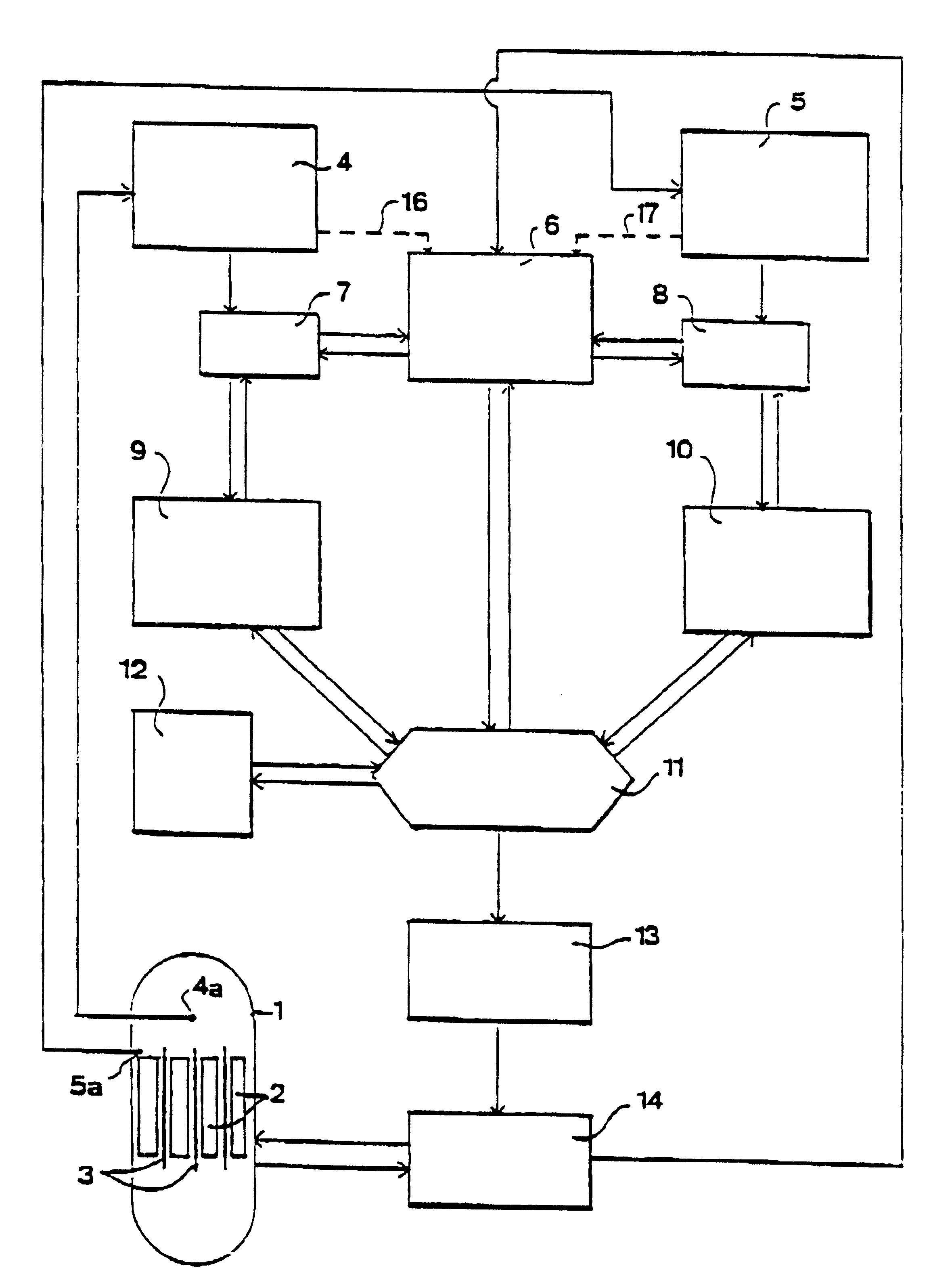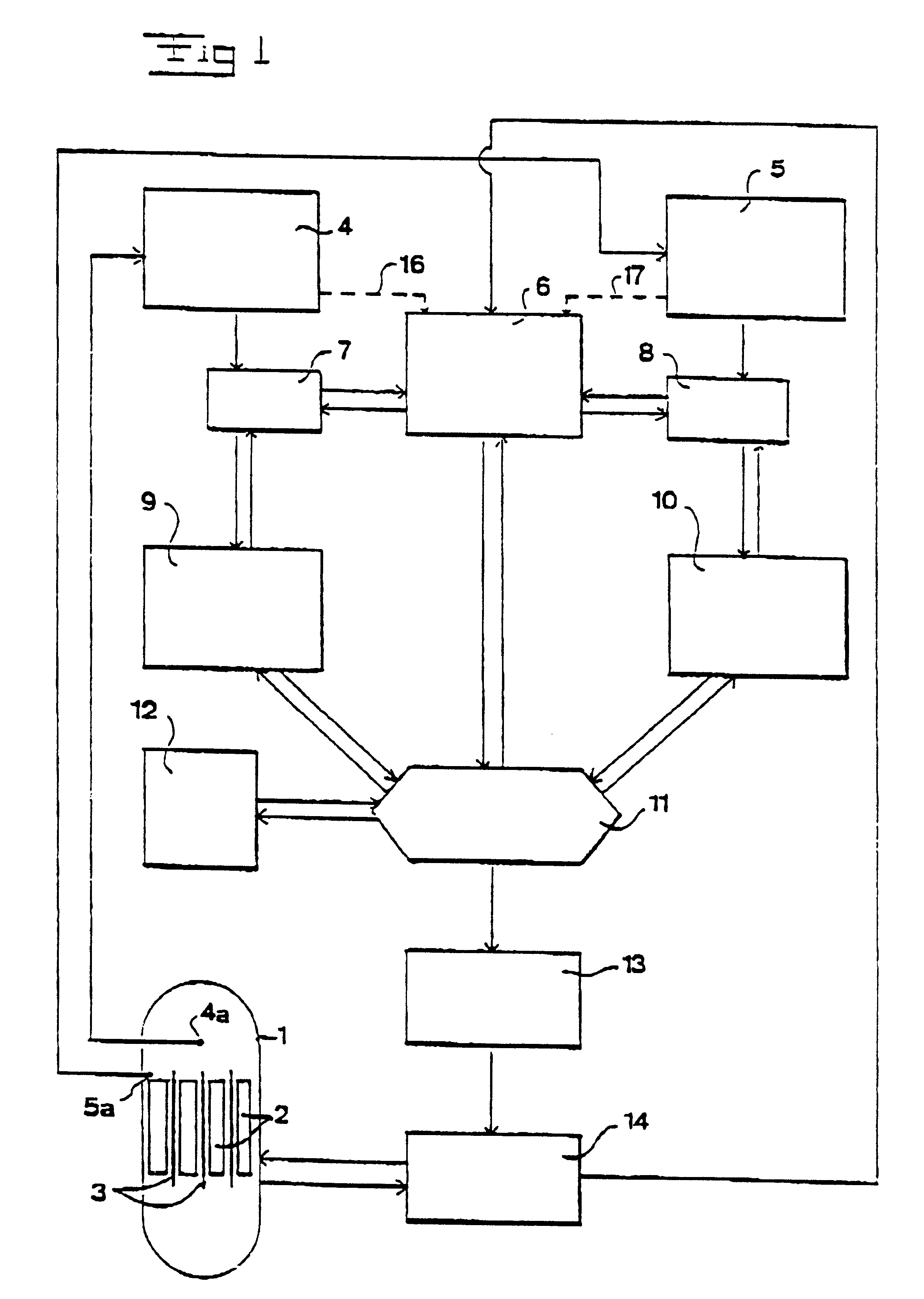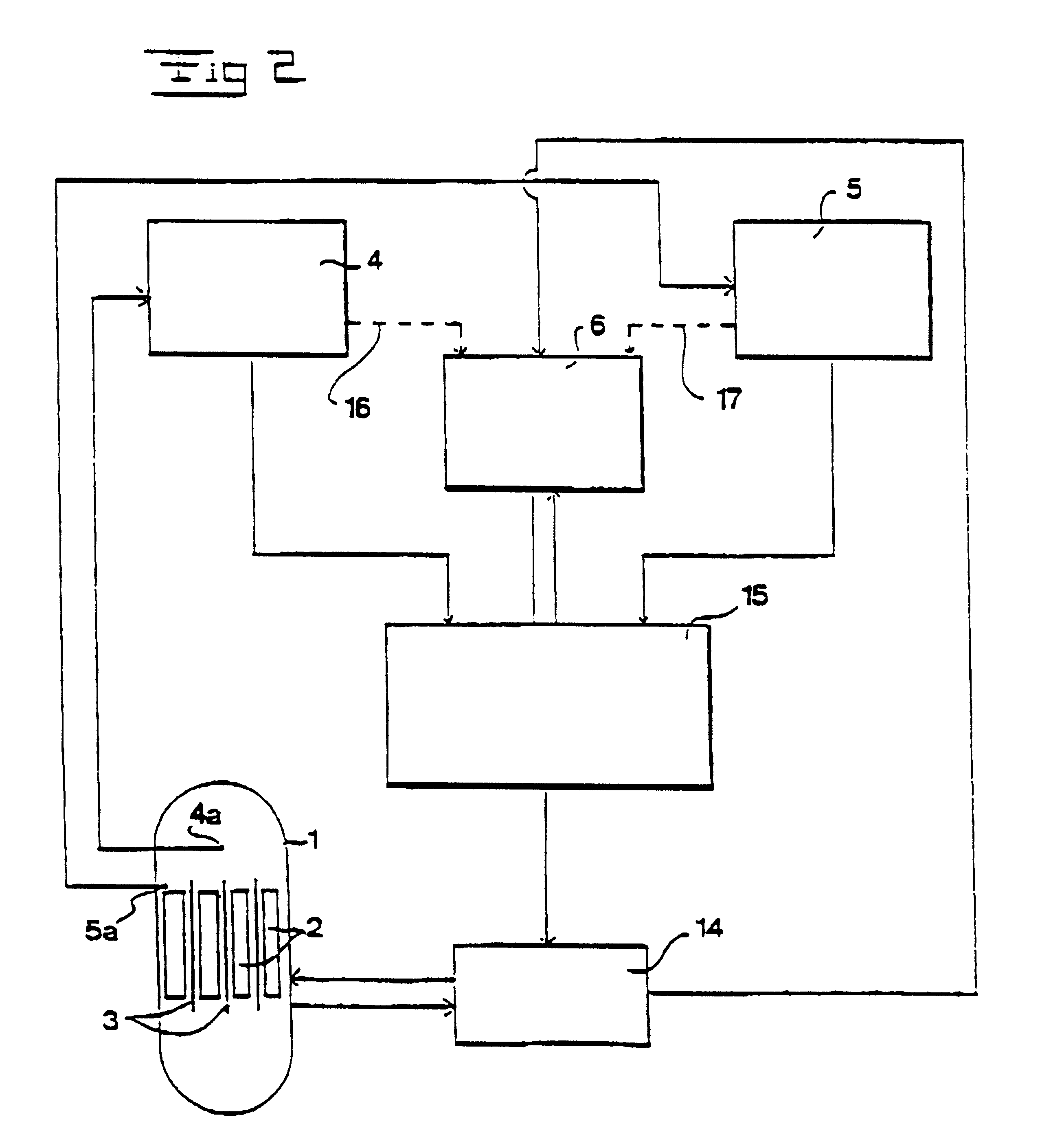Method and a device for evaluating the integrity of the nuclear fuel in a nuclear plant
a nuclear plant and integrity technology, applied in nuclear monitoring, nuclear energy generation, climate sustainability, etc., can solve the problems of brittle cladding tube, primary defect may develop to a larger defect, and defect appears on the cladding tub
- Summary
- Abstract
- Description
- Claims
- Application Information
AI Technical Summary
Benefits of technology
Problems solved by technology
Method used
Image
Examples
Embodiment Construction
The method according to the invention is now to be described with reference to the flow chart of FIG. 1. The method is applicable to a nuclear plant having a reactor 1 which encloses a reactor core formed by a number of schematically disclosed fuel cladding members 2 which each encloses a number of nuclear fuel pellets. The reactor 1 is controlled by means of a number of control rods 3, which are displaceable into and out from the core between the fuel cladding members 2, and by regulating the water flow into and out from the core. It is to be noted that the flow chart disclosed in FIG. 1 is a model of a method for determining the integrity of the nuclear fuel. The invention is not limited to this model but the model may be designed in many different ways.
The box 4 represents a unit for determining the value of a number of parameters including activity data from the off-gases leaving the reactor 1. This unit 4 may for instance comprise a computer having a number of different detecto...
PUM
 Login to View More
Login to View More Abstract
Description
Claims
Application Information
 Login to View More
Login to View More - R&D
- Intellectual Property
- Life Sciences
- Materials
- Tech Scout
- Unparalleled Data Quality
- Higher Quality Content
- 60% Fewer Hallucinations
Browse by: Latest US Patents, China's latest patents, Technical Efficacy Thesaurus, Application Domain, Technology Topic, Popular Technical Reports.
© 2025 PatSnap. All rights reserved.Legal|Privacy policy|Modern Slavery Act Transparency Statement|Sitemap|About US| Contact US: help@patsnap.com



